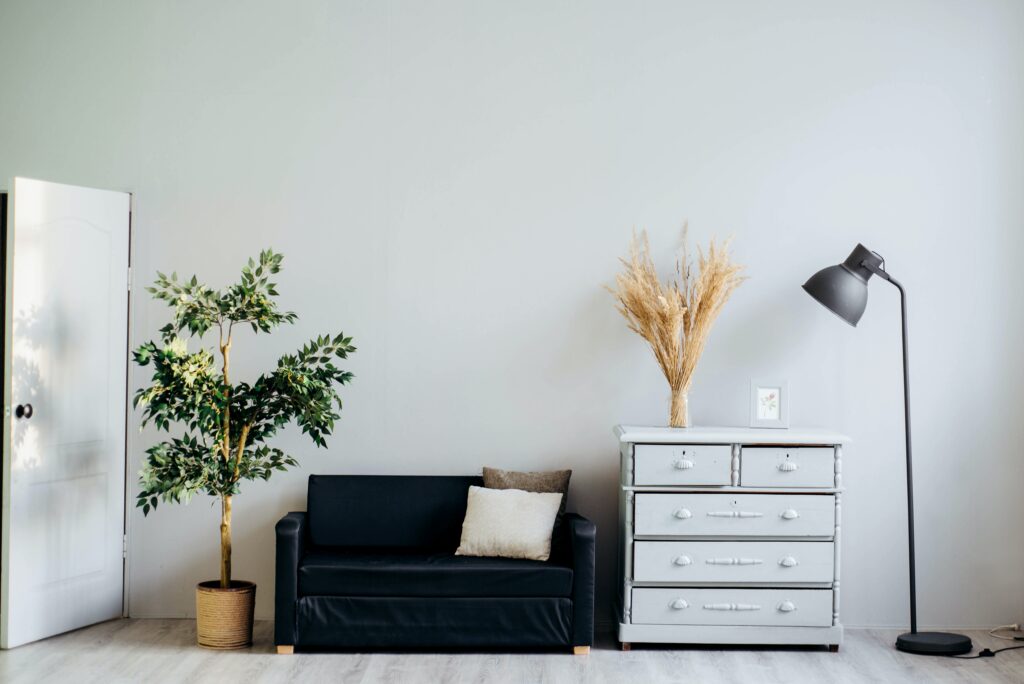In recent years, minimalism has become an increasingly popular design trend for homes. With its focus on simplicity, minimalism offers a refreshing change from cluttered and chaotic spaces. The key to achieving a minimalist look is to keep things clean, simple, and uncluttered. In this article, we’ll provide you with some tips on how to create a minimalist home design that is both stylish and functional.
1. Start with a Clean Slate
The first step in achieving a minimalist home design is to start with a clean slate. This means decluttering your space and getting rid of anything that doesn’t serve a purpose or bring you joy. Take a Marie Kondo-style approach and go through each item in your home, asking yourself if it sparks joy. If it doesn’t, donate it or toss it.
2. Choose a Neutral Color Palette
Minimalist home design typically relies on a neutral color palette to create a clean and simple look. Opt for shades of white, beige, gray, and black for your walls, floors, and furniture. These colors will create a soothing and calming environment that is perfect for a minimalist design.
3. Keep It Simple
One of the key principles of minimalism is simplicity. When it comes to furniture, opt for pieces that have clean lines and a simple design. Avoid ornate or overly decorative pieces that will detract from the overall minimalist look.
4. Embrace Negative Space
Negative space, or the space between objects, is a critical component of minimalist design. By leaving plenty of space between furniture and decor, you can create a sense of openness and simplicity. This negative space also allows the eye to focus on the items that are present, making them stand out more.
5. Invest in Quality Pieces
When it comes to achieving a minimalist home design, quality is key. Invest in high-quality pieces that are built to last, rather than buying cheap, disposable furniture that will need to be replaced in a few years. Quality pieces will not only look better, but they will also save you money in the long run.
6. Let in Natural Light
Natural light is a great way to create a bright and open space. By letting in as much natural light as possible, you can create a minimalist design that feels warm and inviting. Use sheer curtains or no curtains at all to allow the maximum amount of light into your space.
7. Incorporate Plants
Plants are a great way to add a touch of nature to a minimalist design. They also help to purify the air and create a calming environment. Opt for simple, low-maintenance plants like succulents or ferns to add a touch of greenery to your space.

8. Create Zones
In a minimalist home design, it’s important to create zones for different activities. For example, you may have a zone for reading, a zone for watching TV, and a zone for dining. By creating distinct zones, you can help to keep your space organized and uncluttered.
9. Opt for Hidden Storage
Storage is essential in any home, but in a minimalist design, it’s important to keep it hidden. Opt for furniture with built-in storage, like a bed with drawers underneath or a coffee table with a hidden compartment. This will help to keep your space looking clean and uncluttered.
10. Keep It Personal
While minimalist design is all about simplicity, it’s also important to keep your space personal. Display a few treasured items, like family photos or artwork, to add a touch of personality to your space. Just make sure that these items fit in with the overall minimalist design.
11. Focus on Functionality
Minimalist design is not just about how your space looks, but also about how it functions. Make sure that your furniture and decor serve a purpose and are functional for your lifestyle. For example, if you work from home, invest in a comfortable and functional desk and chair.
12. Reduce Clutter
To maintain a minimalist design, it’s important to reduce clutter on a regular basis. Take a few minutes each day to put things away and tidy up. This will help to keep your space looking clean and uncluttered, and will also make it easier to find things when you need them.

13. Incorporate Texture
While minimalist design typically relies on a neutral color palette, you can still incorporate texture to add interest to your space. Think natural materials like wood, stone, and linen, which can add warmth and depth to your minimalist design.
14. Keep it Streamlined
To achieve a minimalist design, it’s important to keep things streamlined. Avoid bulky furniture and decor that takes up too much space, and opt for slim, streamlined pieces instead. This will help to keep your space looking open and uncluttered.
15. Emphasize Cleanliness
Finally, to maintain a minimalist design, it’s important to emphasize cleanliness. Regularly clean your space, including floors, surfaces, and furniture, to keep everything looking fresh and new. This will also help to create a calming and relaxing environment in your home.
In conclusion, creating a minimalist home design is all about keeping things clean, simple, and uncluttered. By following these tips, you can create a space that is both stylish and functional, and that promotes a sense of calm and relaxation. Remember to focus on quality, functionality, and personalization, and to maintain your space on a regular basis to keep it looking its best.
FAQs
Is a minimalist design suitable for families with children?
Yes, a minimalist design can be suitable for families with children. By keeping things clean, simple, and uncluttered, you can create a space that is both stylish and functional for your family.
Can I still have a personal touch in a minimalist design?
Yes, it’s important to keep your space personal and add a touch of personality to your minimalist design. Display a few treasured items that fit in with the overall minimalist aesthetic.
Can I incorporate color in a minimalist design?
Yes, while a neutral color palette is common in minimalist design, you can still incorporate color. Just make sure to keep it simple and avoid too many bold or busy patterns.
How often should I declutter my space in a minimalist design?
To maintain a minimalist design, it’s important to declutter your space regularly. Set aside time each week to tidy up and put things away.
How can I incorporate storage in a minimalist design?
Opt for furniture with built-in storage, such as a bed with drawers underneath or a coffee table with a hidden compartment. This will help to keep your space looking clean and uncluttered while providing essential storage space.




























